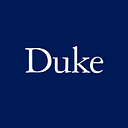We Are The People
By Dirk Philipsen
It all came to a world-transforming head thirty years ago, November 9, 1989.
First they met in secret. They wrote pamphlets and distributed them clandestinely. Then, in very small numbers, they took to the streets. Eventually, thousands got arrested. The infamous Stasi beat and abused a fair number.
None of these early opposition activists in communist East Germany thought about bringing down The System, much less their country. At first, they simply demanded a voice. A voice in politics. A voice in literature, in education. A voice in their own lives.
In the late summer of 1989, during the rapidly escalating demonstrations in Leipzig, Dresden. and Berlin, they declared as much. “We Are the People!” the signs read.
The initial dissidents, organized in groups like Democracy Now and the New Forum, actually did not think much about the Wall that had divided the country since August of 1961. They focused on repression and the pervasive limitations on expression — not just in politics, but, due to the large number of secret police “informal informants,” even in restaurants, community organizations, and their own living rooms.
Lutz Diebold was 18 years old on the day the previously unimaginable happened and people took down the Wall. He almost missed it. When his father rushed into his room on the evening of 9 November 1989 (“I thought he was having a heart attack!”) and breathlessly told him the Western news had just reported the opening of the Wall, he threw on some warm clothes, hopped on his moped, and drove off. He could not quite believe it. “There were thousands of people at the Bornholmer Strasse crossing,” he remembers. “It was crazy. They were screaming, hugging, running, hooting.” And they completely disregarded the border police — so feared until literally minutes earlier.
For the first time in his life, Diebold then drove into West Berlin, the city that, for the East German regime, did not officially exist. East German maps had simply erased the West with a grey area of nothingness. He drove for hours, dazed, confused, excited by more lights, more cars, more traffic than he had ever seen. He got lost, asked a West Berliner on a motorcycle how to get back to East Berlin. “Are you sure you want to go back?” the man asked.
In the summer of 2019, he still struggled to make sense of it all. At 15, an adult officer falsely reported him for “insubordination” during a summer youth camp. Weeks later, his school principal told him that his educational career was finished. He would not attend college, for there was now an “official file” on him. His dreams were crushed. When, three years later, the wall crumbled, rapidly tearing down the regime with it, he felt both joy and spite.
“But now,” he says, “I’m no longer sure I’m happy with what happened after.” In quick succession, the communist party ceded power, the opposition movement that had toppled it was pushed aside, and West Germans moved in, pursuing unification. “What belongs together is growing back together,” the old chancellor of West Germany, Willy Brandt, famously stated. The entire process took place in historical lightning speed. On 3 October 1990, less than a year after the opening of the wall, East and West Germany unified into a single country.
Westerners largely ignored what Easterners can never forget: unification was not a happy marriage between equals. Some called it annexation. In reality it was akin to a liquidation sale, a process where almost nothing of East Germany survived — not a single law or public policy, no institution or tradition. In Berlin, the new capital of the united Germany, the only remnant of East Germany is the “Ampelmann” — the pedestrian traffic light symbol.
Thirty years later, Lutz reflects, “I miss community, a sense of stability, a shared humanity.” Asked to clarify, he shakes his head and says, “I just don’t understand: where is this going, everyone against everyone, always more, always bigger, constant change? How can we survive this?”
He points to an international panel on climate change that says we’re running out of time, and thousands of students marching for more decisive action; to a world in which democracies groan under the weight of autocratic leaders, and his own small taxi business is threatened by hyper-individualized competition from Uber and Lyft.
In a resounding defeat for established western parties — and a bitter irony given East Germany’s recent communist past — the far right AfD has become the second largest party in recent eastern state elections. Alienation runs deep in the former East Germany. Consumer choices or not, people want to matter.
This is part two of a four-part series on the meaning of the Berlin Wall — a 30-year Retrospective. Dirk Philipsen, author of We Were the People — Voices from East Germany’s Revolutionary Autumn of 1989 (Duke UP, 1993), and The Little Big Number — How GDP Came to Rule the World (Princeton UP, 2015/17), teaches at Duke University.
